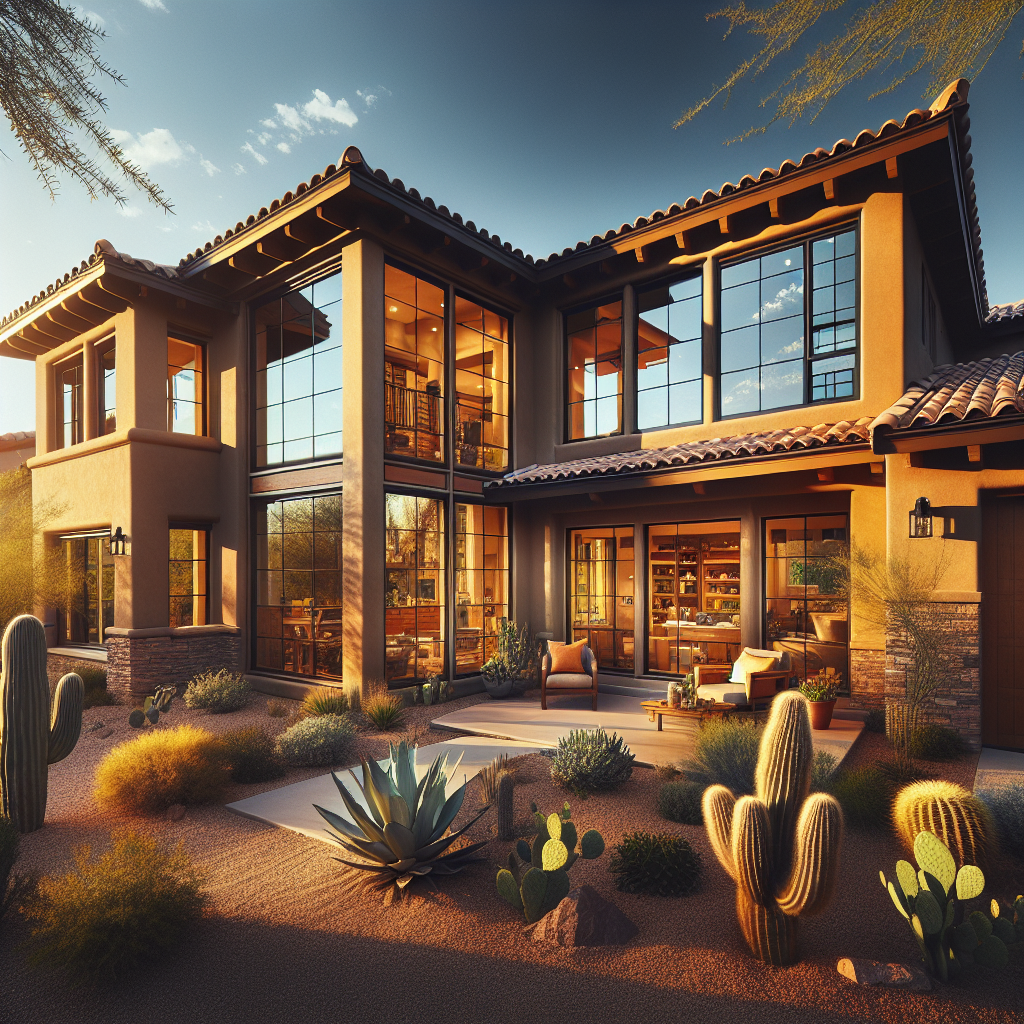Title: From Smart Glass to Solar: How Modern Windows are Shaping the Future of Eco-Friendly Homes
In the quest for greener living and energy efficiency, the home construction and renovation industries are undergoing marked transformations. One of the most significant areas of innovation is in window technology. Windows have evolved from simple openings for light and air to advanced systems designed to improve energy efficiency, enhance comfort, and reduce the ecological footprint of residential and commercial structures. Among the most compelling advancements are smart glass and solar windows, which are integral to the future of eco-friendly homes.
Smart Glass: An Intelligent Approach to Comfort and Efficiency
Smart glass, also known as switchable glass or dynamic glass, offers the unique ability to change its properties based on environmental conditions or user preferences. This technology leverages materials such as liquid crystals, electrochromic compounds, and suspended particle devices to regulate light and heat transmission.
-
Adjustable Transparency: One of the hallmark features of smart glass is its adjustable transparency. Users can control the opacity of the glass through electrical inputs. This means that during hot summer days, homeowners can reduce the amount of sunlight entering their homes, thereby decreasing the need for air conditioning. Conversely, in colder months, the glass can remain clear to maximize natural heating from the sun.
-
Enhanced Privacy: Besides energy efficiency, smart glass offers enhanced privacy. With a simple switch, windows can turn from clear to opaque, making them ideal for bathrooms, bedrooms, and other private areas without the need for additional window coverings like blinds or curtains.
- Reduction in Energy Consumption: By optimizing the interior temperature, smart glass significantly reduces reliance on heating, ventilation, and air conditioning (HVAC) systems. Studies indicate that smart glass can reduce energy consumption by up to 20%, offering substantial savings on utility bills while minimizing environmental impact.
Solar Windows: Power Generating Panes
Solar windows, another groundbreaking innovation, integrate photovoltaic cells into the glass to harness solar energy. These windows function similarly to traditional solar panels but offer dual benefits as they serve the fundamental purpose of a window while generating renewable energy.
-
Energy Generation: Solar windows are designed to capture sunlight and convert it into electricity. This electricity can be used to power household appliances, lighting, and heating systems, significantly reducing the dependence on the grid.
-
Architectural Aesthetics: Unlike bulky solar panels, solar windows maintain the aesthetics of a building. They blend seamlessly into the architectural design, making them an attractive option for homeowners and builders who are conscious of both style and environmental impact.
- Cost-Effectiveness: While the initial investment in solar windows might be higher than traditional windows, the long-term benefits are considerable. Homeowners can expect to see a reduction in their energy bills and, in some cases, can even sell excess energy back to the grid.
Technological Integration
Modern windows are not just standalone entities; they are becoming integral components of smart home ecosystems. Here are a few ways these windows are being integrated with other smart technologies:
-
Smart Home Compatibility: Advanced smart glass and solar windows can be integrated with home automation systems. Users can control window settings through apps or voice-activated assistants like Amazon’s Alexa or Google Home. This allows for seamless management of lighting, privacy, and energy consumption.
-
Sensors and Automation: Incorporating sensors in the window systems can provide data on temperature, humidity, and sunlight intensity. Automated adjustments can be made in real-time to enhance comfort and efficiency. For instance, if the sensors detect a high inside temperature, windows can automatically tint to reduce heat ingress.
- Energy Management Systems: When connected to an energy management system, solar windows can optimize the use of generated power. These systems can prioritize self-consumption and battery storage or feed energy back to the grid during peak production times.
Sustainability and Environmental Impact
The shift to smart and solar windows is driven by the need to create sustainable living environments. Here are some of the key environmental benefits:
-
Reduction in Carbon Footprint: By decreasing reliance on traditional power sources, smart and solar windows effectively reduce greenhouse gas emissions. This is critical in the fight against climate change.
-
Resource Efficiency: These technologies promote efficient use of resources. Solar windows, for example, utilize one of the most abundant renewable resources—sunlight—while smart glass optimizes the use of natural light and heat.
- Minimal Waste: Modern window technologies are designed to last longer and require less maintenance, reducing waste over the long term. Their durability means fewer replacements and less material ending up in landfills.
Challenges and Future Prospects
While the benefits are promising, there are challenges that need to be addressed:
-
High Initial Costs: The upfront costs for smart and solar windows can be prohibitive. However, as with most technologies, prices are expected to decrease as adoption increases and manufacturing processes improve.
-
Technological Limitations: There is ongoing research to enhance the efficiency and performance of these windows. For instance, improving the energy conversion rates of solar windows remains a significant focus area.
- Market Penetration: Increasing awareness and encouraging widespread adoption is crucial. Incentives from governments and environmental bodies could play a significant role in promoting these technologies.
The future of eco-friendly homes is bright, with smart glass and solar windows playing a pivotal role. These innovations not only enhance the quality of life by making homes more comfortable and aesthetically pleasing but also promote sustainable living by reducing energy consumption and reliance on non-renewable resources.
FAQs
1. What exactly is smart glass?
Smart glass, also known as switchable glass, is a type of window that can change its light transmission properties. This can be controlled through electrical inputs, allowing the glass to go from clear to opaque and various shades in between.
2. How do solar windows work?
Solar windows contain photovoltaic cells that capture sunlight and convert it into electricity. This can be used to power household needs, reducing the home’s dependence on external electric grids.
3. Are smart and solar windows cost-effective?
While the initial costs can be high, both smart and solar windows offer long-term financial benefits through energy savings and potential incentives for sustainable living. Over time, they can pay for themselves through reduced utility bills.
4. Can these windows be integrated into existing homes?
Yes, smart and solar windows can often be retrofitted into existing homes. However, the feasibility and cost will depend on the specific circumstances of the home and existing window structures.
5. How durable are smart and solar windows?
Both smart and solar windows are designed to be durable and long-lasting. They usually come with warranties that cover multiple years, ensuring that they remain functional and efficient over extended periods.
6. Is it possible to combine smart and solar window technologies?
Some advanced products are exploring the integration of both smart and solar technologies. This combination can offer the benefits of both adjustable transparency for comfort and energy generation for sustainability.
Through innovation and technology, windows are no longer just a structural necessity but are becoming vital components in the creation of eco-friendly, sustainable homes. The future indeed looks clear—or opaque—with smart and solar windows paving the way.

